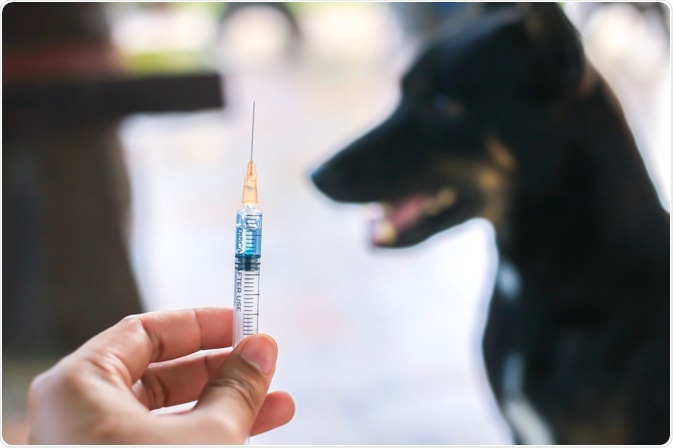Rabies has long been recognized throughout history, which is most likely due to the particularly stark symptoms associated with the disease. It appears to have been ever-present in dog species, as well as occurring intermittently in other animal species such as bats.
Early history of rabies
It was quickly understood even in ancient history that the rabies virus could be passed on via an animal bite. Rabies is mentioned in several ancient literature works, such as the paper by Aristotle (300BC) that notes rabies as one of the diseases that affect dogs and any animal that the dog bites.
Also in early historical times, the owner of a dog displaying symptoms of rabies such as excessive salivation was required to take precautions to prevent their dog from biting someone.
Crazy History Lesson: How the Rabies Vaccine Came to Be | National Geographic
Epidemiology of rabies
The prevalence of rabies in different areas of the world varied throughout history. Some regions were thought to be free of rabies in particular time periods, although this changed with time as the disease crept back in depending on the animal population and prevalence of the disease.
At the turn of the 20th century, rabies was greatly reduced from many developed regions that were previously affected, such as Central Europe. This is thought to be largely due to the introduction of rabies vaccination, although other factors may also have had an impact. Other parts of the world, however, continue to experience effects as a result of the rabies virus even today.
Prevention of rabies transmission
In the 18th century, legislation was passed in countries like Germany, France and Spain for the destruction of stray dogs, in an attempt to reduce the risk that a rabid dog may come into contact and bite a human in the region. However, this was not held well by the public and was not enforced in most areas throughout the world.
Other preventative methods were introduced in the 19th century, such as quarantine and other health initiatives, due to a better understanding of dogs and the transmission of rabies to urban populations. Likely as a result of these measures, the number of humans affected by rabies were greatly reduced, and by the 20th century, many areas were considered to be free from the virus.
Rabies vaccination
Pasteur first demonstrated the possibility of vaccinating dogs to prevent rabies infection and possible transmission to humans in 1885. However, this was not routinely practiced until the 1920s, when domestic animal vaccination was developed and became widely used.
This practice helped to reduce the prevalence of rabies in animals dramatically. Provided that the majority of domestic animals (70%) were vaccinated, the effect of rabies could essentially be eliminated from the region.
 Dogs can be vaccinated against rabies. Image Credit: Numstocker / Shutterstock.com
Dogs can be vaccinated against rabies. Image Credit: Numstocker / Shutterstock.com
Current management of rabies
Even today, once symptoms develop there is no known treatment for rabies. Instead, the current management for someone exposed to rabies is post-exposure prophylaxis (PEP). This involves administration of rabies immunoglobulin and vaccine soon after exposure to the virus, followed by a series of injections over 30 days.
To date, PEP has a success rate nearing 100% when administered correctly shortly after exposure to the rabies virus. As a result, there are now comparatively few cases of rabies when people have access to adequate medical treatment. 95% of the 55,000 cases of rabies each year occur in Asia and Africa where medical attention after exposure to the virus is often lacking.
References
Further Reading